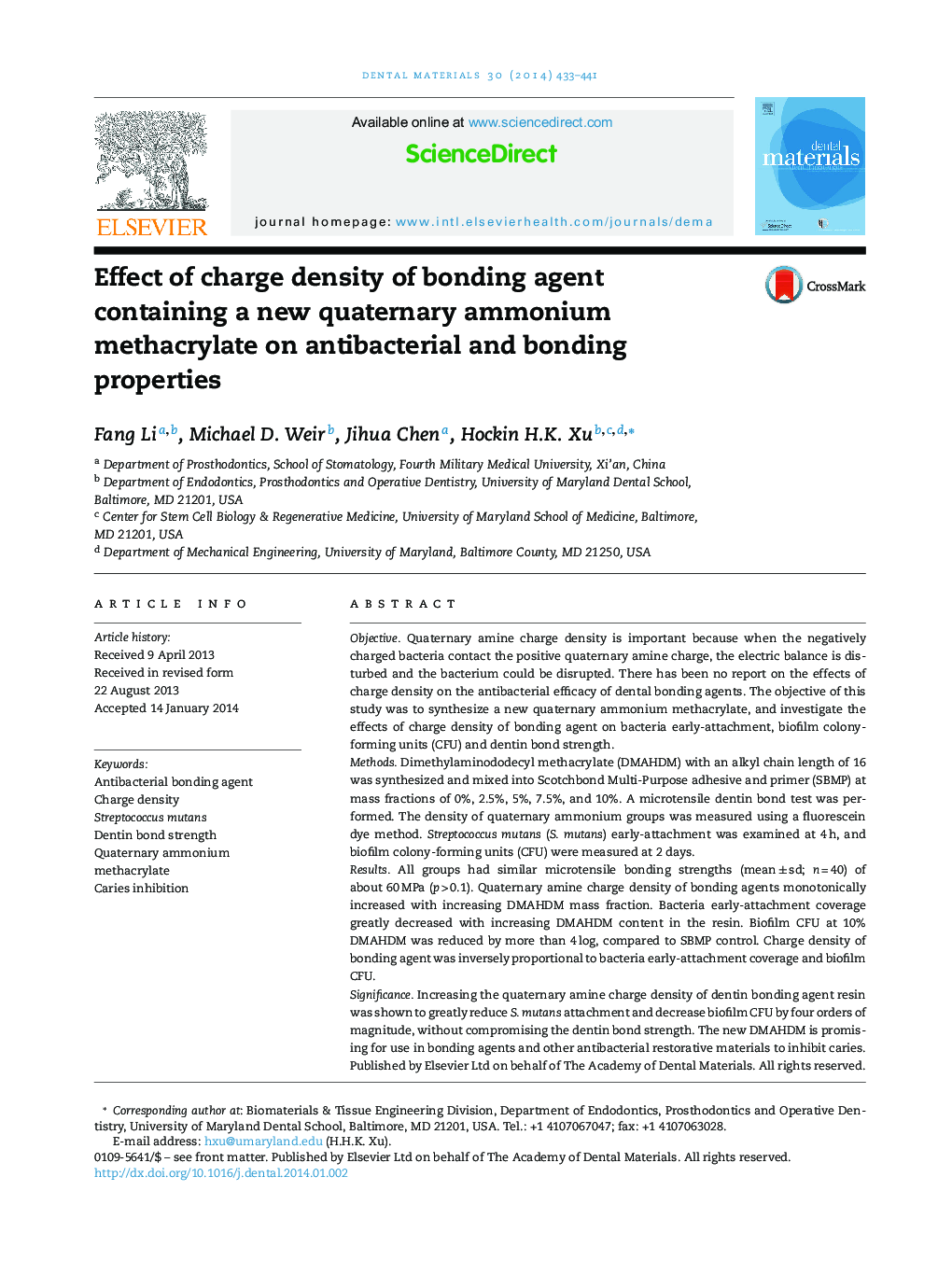| Article ID | Journal | Published Year | Pages | File Type |
|---|---|---|---|---|
| 1421117 | Dental Materials | 2014 | 9 Pages |
ObjectiveQuaternary amine charge density is important because when the negatively charged bacteria contact the positive quaternary amine charge, the electric balance is disturbed and the bacterium could be disrupted. There has been no report on the effects of charge density on the antibacterial efficacy of dental bonding agents. The objective of this study was to synthesize a new quaternary ammonium methacrylate, and investigate the effects of charge density of bonding agent on bacteria early-attachment, biofilm colony-forming units (CFU) and dentin bond strength.MethodsDimethylaminododecyl methacrylate (DMAHDM) with an alkyl chain length of 16 was synthesized and mixed into Scotchbond Multi-Purpose adhesive and primer (SBMP) at mass fractions of 0%, 2.5%, 5%, 7.5%, and 10%. A microtensile dentin bond test was performed. The density of quaternary ammonium groups was measured using a fluorescein dye method. Streptococcus mutans (S. mutans) early-attachment was examined at 4 h, and biofilm colony-forming units (CFU) were measured at 2 days.ResultsAll groups had similar microtensile bonding strengths (mean ± sd; n = 40) of about 60 MPa (p > 0.1). Quaternary amine charge density of bonding agents monotonically increased with increasing DMAHDM mass fraction. Bacteria early-attachment coverage greatly decreased with increasing DMAHDM content in the resin. Biofilm CFU at 10% DMAHDM was reduced by more than 4 log, compared to SBMP control. Charge density of bonding agent was inversely proportional to bacteria early-attachment coverage and biofilm CFU.SignificanceIncreasing the quaternary amine charge density of dentin bonding agent resin was shown to greatly reduce S. mutans attachment and decrease biofilm CFU by four orders of magnitude, without compromising the dentin bond strength. The new DMAHDM is promising for use in bonding agents and other antibacterial restorative materials to inhibit caries.
